Malabar Parakeet: Overview, Characteristics and Care
As avian enthusiasts, we are always searching for unique and vibrant species to add to our collection. The Malabar Parakeet (psittacula columboides), aka the Blue-winged Parakeet is a fascinating bird that makes an excellent pet for those looking for a smaller parrot species. These birds are incredibly intelligent, social, and playful, with a striking appearance that is sure to turn heads.
We will provide you with an overview of the Malabar Parakeet while highlighting its unique characteristics and essential care tips. We will also give you insights into their physical appearance, behavior, and other interesting facts that make them a popular choice among bird enthusiasts.
Key Takeaways:
- The Malabar Parakeet is a stunning avian species with a vibrant appearance.
- As a pet, they are known for their intelligence, social nature, and playfulness.
- Caring for your Malabar Parakeet requires proper nutrition, a nurturing environment, and regular interaction.
- These birds have distinctive physical characteristics, including their bright plumage and unique markings.
- Understanding their behavior patterns, vocalizations, and daily rhythms is essential to providing optimal care for your Malabar Parakeet.
Malabar Parakeet Physical Appearance and Size
The Malabar Parakeet is a stunning medium-sized parrot distinguished by its vivid coloration. Adults measure about 15 inches (38 centimeters) in length from the tip of the tail to the top of the head. Their long tail comprises nearly half of their size. Their wingspan can range from 33 to 38 centimeters (13 to 15 inches), making them agile fliers.
Mature male Malabar Parakeets exhibit bright turquoise-blue plumage on the head, neck, mantle, and underparts. This contrasts with the dark bluish-gray wings and back. The nape and upper back are pale gray. A distinctive black neck collar is bordered by brilliant turquoise below.
Other striking features of the male include red upper mandible with yellowish tip, pale pinkish-blue underwings, and a yellow-tipped blue tail. Females lack the vivid turquoise neck collar and have an all black beak. Their plumage is more uniformly grayish-blue than the male’s.
Juvenile Malabar Parakeets can be identified by their Initial greenish plumage and orange beaks. After their first molt around one year old, they acquire adult coloration. Males then develop the red and turquoise markings.
In the wild, the Malabar Parakeet inhabits forest habitats. Its bright palette of colors and long tail help it stand out against the green foliage. Despite vibrant plumage, it can still blend into the shadows of the canopy. The male’s red beak may play a role in attracting a mate.
Malabar Parakeet Behavior and Temperament
Malabar Parakeet Behavior
The Malabar Parakeet is a highly social and active parrot. They form small, moderately noisy flocks which enables them to locate scattered food sources and avoid predators.
During the day, Malabar Parakeets forage, preen each other, and engage in social play. Complex flight displays with synchronized movements are used for bonding and communication. Their loud, screechy contact calls allow them to coordinate flock activities.
Malabar Parakeets exhibit intelligence and cognition that stimulates their inquisitive nature. They are adept tool users, able to hold food items in their feet while eating. Their nimble climbing skills aid in navigating their arboreal habitat. Daily bathing maintains plumage health.
Some behaviors like chewing bark serve to maintain beak condition. Malabar Parakeets also exhibit age-related behaviors – juveniles beg and are fed by parents, young birds practice flying, and adults select nest sites.
Malabar Parakeet Temperament
The Malabar Parakeet has an affectionate, playful personality combined with strong natural instincts. Though wary of threats, they are naturally curious around humans. Their intelligence facilitates learning tricks and bonding with caretakers.
Despite small size, Malabar Parakeets have energetic, boisterous temperaments. Their powerful beaks can inflict painful bites if mishandled. They thrive best in large aviaries with adequate space to fly. Providing plenty of interactive toys prevents problematic chewing behaviors.
Malabar Parakeets enjoy physical affection once habituated to handling. Their social nature makes them ideal pets for owners who can provide lots of quality interaction. With proper training, these parakeets can learn to talk and perform tricks. Their fun-loving attitude persists into old age.
Malabar Parakeet Diet and Feeding Habits
Diet
The diet of the Malabar Parakeet is wide-ranging and flexible, adapted to utilize the diverse resources found in its forest ecosystem habitats. This parakeet forages for a variety of seeds, fruits, flowers, nectar, and insects to meet its nutritional needs.
The Malabar Parakeet feeds extensively on figs and other wild fruits. It consumes the fruits of forest trees such as mangos, jamuns, and tamarinds. Berry bushes are also attractive feeding sites. Nuts and seeds comprise another important dietary component. This parakeet is known to feed on seeds of peas, acacias, and other trees. It uses its strong beak to crack into hard nuts.
Nectar from flowers is also sought out by the Malabar Parakeet. It can sometimes be seen visiting flowering trees to drink nectar. Though not exclusively nectarivorous, this parakeet supplements its diet with the sugars from nectar. It will also eat petals and pollen.
As pets, they require a similar diet that closely mimics their natural food sources. You can provide a nutritious diet for your Malabar Parakeet by offering high-quality pellet blends, fresh fruits, and vegetables. Pellet blends are specially formulated to contain all the necessary nutrients, vitamins, and minerals required for optimal health. Fresh fruits and vegetables, such as apples, bananas, carrots, and leafy greens, should also be included in their diet to increase their dietary variety and fiber intake.
It is essential to avoid feeding your Malabar Parakeet any food that is high in fat, sugar, or salt. Foods such as chocolate, avocado, and caffeine-containing beverages should also be avoided as they can be toxic to parakeets.
Feeding Habits
In addition to providing a well-balanced diet, it is crucial to observe your Malabar Parakeet’s feeding habits. These birds have a high metabolism and require frequent feeding throughout the day. Provide fresh food and water daily and clean their food and water bowls regularly to prevent the growth of harmful bacteria.
It is also recommended to supplement your Malabar Parakeet’s diet with essential vitamins and minerals, especially if you are feeding them a seed-based diet. These supplements can be added to their water or food and are readily available in pet stores.
Malabar Parakeet Habitat and Distribution
This vibrant green parakeet is native to the Indian Subcontinent. It inhabits a range stretching across parts of India, Sri Lanka, and the Maldives.
The preferred habitats of the Malabar Parakeet are forested areas and woodlands. They thrive in moist deciduous forests, evergreen forests, mangroves, and wooded parks and gardens. The Malabar Parakeet is found in the Western Ghats mountains along the southwest coast of India, as well as central and southern India. Its range extends northwards to the lower Himalayan foothills.
In Sri Lanka, the Malabar Parakeet resides in the lowland rainforests of the southwest wet zone and the hill forests of the central highlands. It is also present along the northern and eastern coasts. Small introduced populations have become established on the Maldives islands.
The distribution pattern of the Malabar Parakeet is somewhat sporadic across its native range. Regionally, it may be quite common in suitable habitat. However, its populations are fragmented and it is generally uncommon to rare over much of its range. Loss and degradation of forest ecosystems pose significant threats to the future of this vivid green parakeet. Protecting its natural habitat and limiting trapping for the pet trade are important conservation priorities.
Malabar Parakeet Breeding Behavior and Reproduction
The Malabar Parakeet engages in intricate breeding rituals to reproduce and raise young. These parakeets form monogamous breeding pairs that cooperate to prepare the nest, incubate eggs, and care for hatchlings.
Breeding season for the Malabar Parakeet varies across its range, occurring December to April in India and February to August in Sri Lanka. To attract a mate, male parakeets display by showing off bright plumage and performing acrobatic flights. Pairs participate in bonding rituals, like preening each other’s feathers.
The male and female jointly construct a nest in a natural tree cavity or old woodpecker hole. The female lays a clutch of 3-4 white eggs which she incubates for about 23 days. The male stands guard and brings food back to the nest. Both parents feed the chicks a diet of regurgitated seeds and fruit pulp.
Fledgling Malabar Parakeets leave the nest at around 30 days old. Juveniles can be distinguished by duller plumage lacking adult coloration. After a year, the young birds molt and acquire their mature vibrant feathers.
Malabar Parakeets have a relatively short lifespan, with the average being around 10-15 years. However, with proper care and attention, they can live up to 20 years in captivity. It’s important to note that breeding Malabar Parakeets is not recommended for inexperienced bird owners, as it requires a significant amount of knowledge and expertise to ensure the health and safety of both the parents and their offspring.
Malabar Parakeet Vocalizations
When it comes to vocal communication, Malabar Parakeets are far from shy. They have a diverse range of vocalizations, which they use to communicate with their flock mates and express their emotions.
One of their most common calls is a high-pitched “kee-kee-kee,” which they use to indicate that they’re content and relaxed. They also make a sharp “tsik” sound when they’re alarmed or feel threatened.
During flight, Malabar Parakeets emit a distinctive, squawking sound, which can be heard from a considerable distance away. They also use these calls to locate their flock mates when they’re flying in a group.
Malabar Parakeets are intelligent birds that can learn to mimic human speech and other sounds with training. However, they’re not as renowned for their mimicry abilities as several other parrot species.
If you want to encourage your Malabar Parakeet to vocalize more, try playing music or singing to them. They may start to mimic the melodies, creating a fun and entertaining diversion for both you and your bird.
Malabar Parakeet Pet Care and Taming
When it comes to caring for Malabar Parakeets as pets, there are some essential tips to keep in mind. These birds require a nurturing environment to thrive, and with the right care, they can make affectionate and playful companions.
Firstly, it’s important to provide your Malabar Parakeet with a spacious and appropriately designed cage. The cage should be large enough for them to move around freely, with enough room for toys and perches. It should also have a secure locking mechanism to prevent your bird from escaping.
Secondly, make sure to provide your Malabar Parakeet with a balanced and nutritious diet. This should include a variety of fruits, vegetables, seeds, and pellets. Avoid feeding them avocado, chocolate, caffeine, alcohol, and any other foods that can be harmful to their health.
Thirdly, maintain a regular grooming routine. This includes trimming your bird’s nails, cleaning their beak, and bathing them. You can use a shallow dish of water or a bird bath to allow your parakeet to clean themselves.
When it comes to taming your Malabar Parakeet, it’s important to be patient and consistent. Start by spending time near their cage, talking to them and offering them treats. Once they become comfortable with your presence, you can start to offer your hand for them to perch on. Always move slowly and avoid sudden movements, as this can startle your bird.
Handling and Socializing
Malabar Parakeets are social birds, so it’s important to spend time interacting with them daily. This includes playing with them, training them, and offering them affection. However, it’s also important to respect their boundaries. Avoid forcing your bird to interact with you if they seem uncomfortable, and always handle them gently to avoid causing harm.
If you have a single Malabar Parakeet, it’s important to provide them with plenty of social interaction. Consider getting a companion bird for them to bond with. However, take care to introduce them gradually and monitor their interactions closely.
Malabar Parakeet Training
Training your Malabar Parakeet can be a fun and rewarding experience for both you and your feathered friend. These intelligent birds are eager learners and respond well to positive reinforcement techniques.
When embarking on a training program, it’s important to start with basic commands such as “step up” and “step down.” These commands will teach your parakeet to perch on your finger or a designated spot. Once your parakeet has mastered these commands, you can move on to more advanced tricks such as “turn around” and “fetch.”
Always use positive reinforcement such as verbal praise, treats, and toys to encourage good behavior. Avoid punishment and negative reinforcement as it can lead to fear and aggression in your parakeet.
Training your Malabar Parakeet also involves building trust and a bond with your bird. Spend time with your parakeet every day, talking to them, and offering them opportunities to explore outside of their cage in a safe environment.
Remember that patience and consistency are key when training your parakeet. Keep sessions short and enjoyable, and always end on a positive note. With time, your Malabar Parakeet will become a well-trained and happy companion.
Malabar Parakeet Health Issues
Just like any other pet, Malabar Parakeets are prone to health issues. As responsible pet owners, it is essential to be aware of these issues and take necessary precautions to prevent them.
Psittacosis: Commonly known as parrot fever, this bacterial infection is highly contagious and can be transmitted to humans. Symptoms may include lethargy, loss of appetite, and respiratory problems. Keep your pet’s cage clean, and take them for regular check-ups with a veterinarian.
Feather-plucking: Malabar Parakeets may develop a habit of plucking their feathers out due to stress or boredom. Ensure they have enough toys and a stimulating environment to avoid this issue. If the problem persists, consult a veterinarian as it may require medical intervention.
Beak and feather disease: This viral infection affects the beak and feathers of parrots, causing them to appear abnormal. There is no cure for this disease, but regular check-ups with a veterinarian can help identify it early.
Obesity: Overfeeding and a lack of exercise can lead to obesity in Malabar Parakeets. This can cause health problems such as heart disease and respiratory issues. Feed them a balanced diet and provide ample opportunities for exercise to prevent obesity.
Other common health issues: Malabar Parakeets may also suffer from respiratory infections, mites or lice, and digestive problems. Regular check-ups and a clean living environment can help prevent these issues.
Remember, early detection and treatment of health issues is crucial in ensuring the well-being of your Malabar Parakeet. If you notice any unusual symptoms or behavior, consult a veterinarian immediately.
Malabar Parakeet Daily Rhythms and Lifespan
Malabar Parakeets are active during the daytime and sleep at night. They follow a normal diurnal rhythm. During their waking hours, they spend most of their time foraging for food, socializing with flock mates, and engaging in play.
In captivity, Malabar Parakeets require at least 10 hours of uninterrupted sleep per night. This is essential for maintaining good health and vitality. With proper care and a healthy environment, the average lifespan for this species ranges from 12-15 years. Some individuals may even live up to 20 years or longer.
Providing regular veterinary check-ups, a balanced diet, and a clean living space will help captive Malabar Parakeets reach their maximum lifespan potential.
As highly social creatures, Malabar Parakeets require regular interaction with flock mates to stay happy and healthy. For pet birds, owners should provide ample space, toys, and play time. Strong bonds will form between parakeets and their human caretakers through this daily interaction.
Understanding the natural rhythms and lifespan of the Malabar Parakeet is key to proper care. Meeting their needs for sleep, diet, socialization and veterinary care allows them to thrive in captivity.
Malabar Parakeet Conservation Status and Challenges
As a species, the Malabar Parakeet has a conservation status of “Least Concern” according to the International Union for Conservation of Nature (IUCN). However, there are still several challenges that threaten their populations in the wild.
One significant threat to Malabar Parakeets is habitat loss due to deforestation. As their natural habitat is predominantly forested areas, the destruction of these areas has led to a decline in their populations.
Another challenge for Malabar Parakeets is the illegal pet trade. These birds are highly sought after for their vibrant plumage and playful personalities, leading to high demand for them as pets. The capture and transport of Malabar Parakeets for the pet trade is detrimental to their populations in the wild.
Furthermore, the introduction of non-native species, such as rats and snakes, to their natural habitats can also have a negative impact on Malabar Parakeet populations.
Efforts are being made to protect and preserve the populations of Malabar Parakeets in the wild. Conservation projects are in place to restore and maintain their natural habitats and educate local communities about the importance of protecting these birds.
As individuals, we can help support the conservation efforts for Malabar Parakeets by avoiding the purchase of birds of unknown origin and supporting conservation organizations dedicated to protecting their populations and habitats.
Frequently Asked Questions
What is the Malabar Parakeet’s natural habitat?
They are primarily seen in the southwest region of India, specifically in the Western Ghats strip that extends from southwest India up to Bombay and south to Kerala. This species is originally from the Indian Subcontinent and can also be found in certain areas of Sri Lanka and the Maldives.
What do Malabar Parakeets eat?
Malabar Parakeets have a varied diet that consists of fruits, seeds, nuts, berries, and vegetation.
How long do Malabar Parakeets live?
On average, Malabar Parakeets have a lifespan of 10 to 15 years in the wild. With proper care in captivity, they can live up to 20 years or even longer.
Can Malabar Parakeets be trained?
Yes, Malabar Parakeets can be trained with patience and positive reinforcement. They can learn basic commands and even perform simple tricks, making them interactive and engaging pets.
What are the common health issues that Malabar Parakeets may face?
Malabar Parakeets can be susceptible to respiratory infections, feather plucking, and beak overgrowth if their diet or environment is not properly maintained. Regular veterinary check-ups and a balanced diet are essential for their well-being.
Are Malabar Parakeets endangered?
Currently, Malabar Parakeets are not considered endangered. However, like many bird species, they face habitat loss and potential threats from the illegal pet trade. Conservation efforts are in place to protect their populations.
How do Malabar Parakeets communicate?
Malabar Parakeets communicate through a range of vocalizations, including calls, chirps, and squawks. They use these sounds to express their needs, establish territory, and communicate with their flock members.

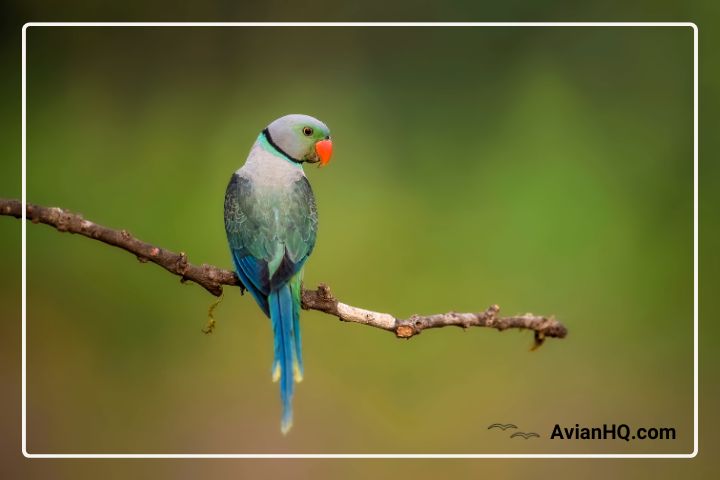
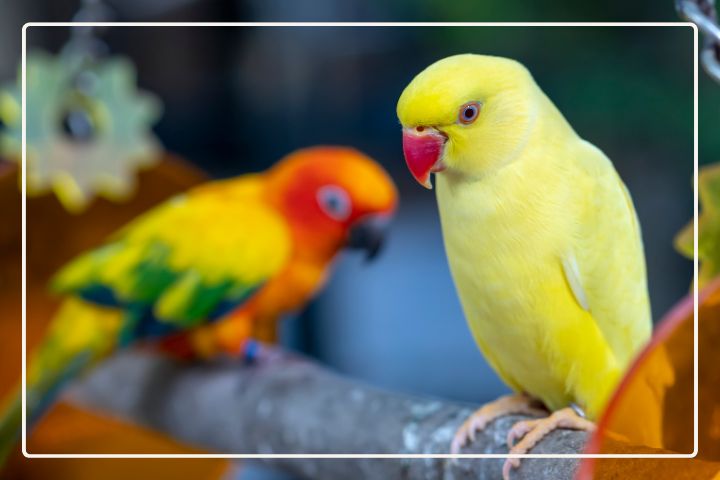
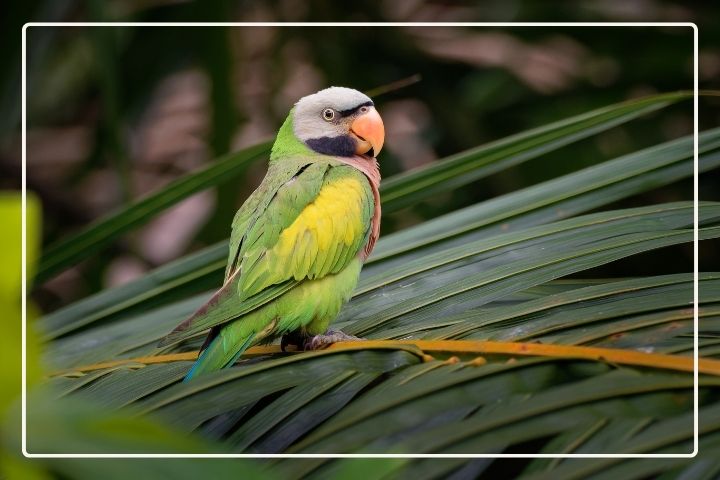
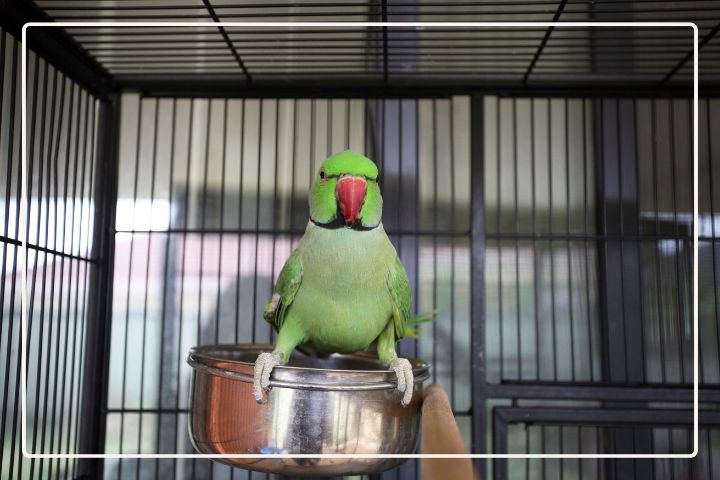
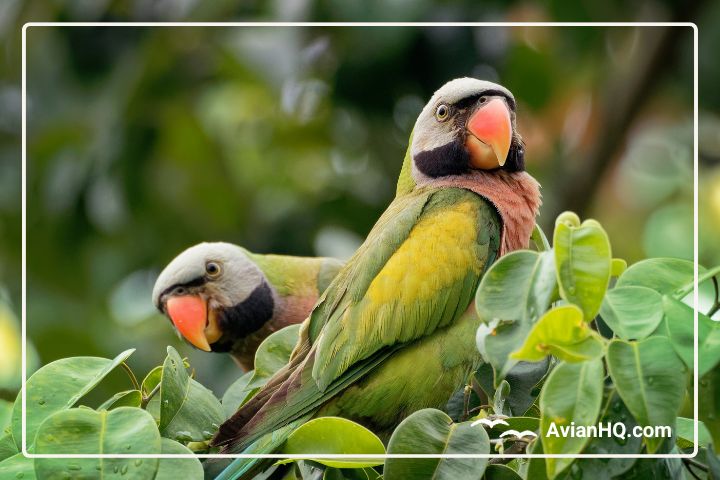
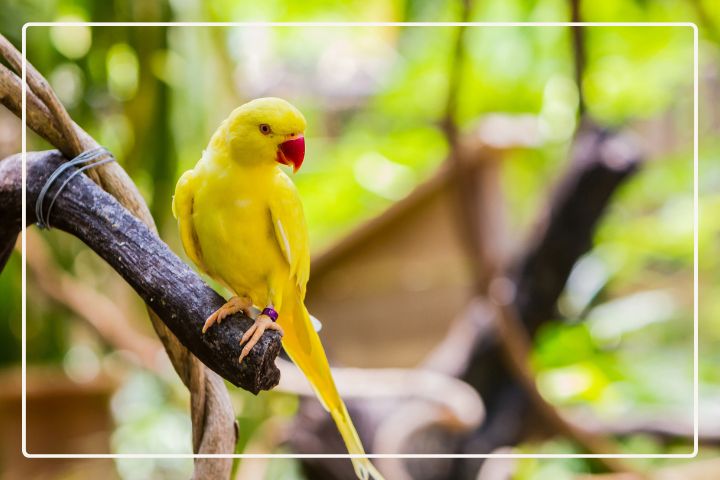

Hello my friend! I wish to say that this article is awesome, great written and include approximately all significant infos. I’d like to see extra posts like this.